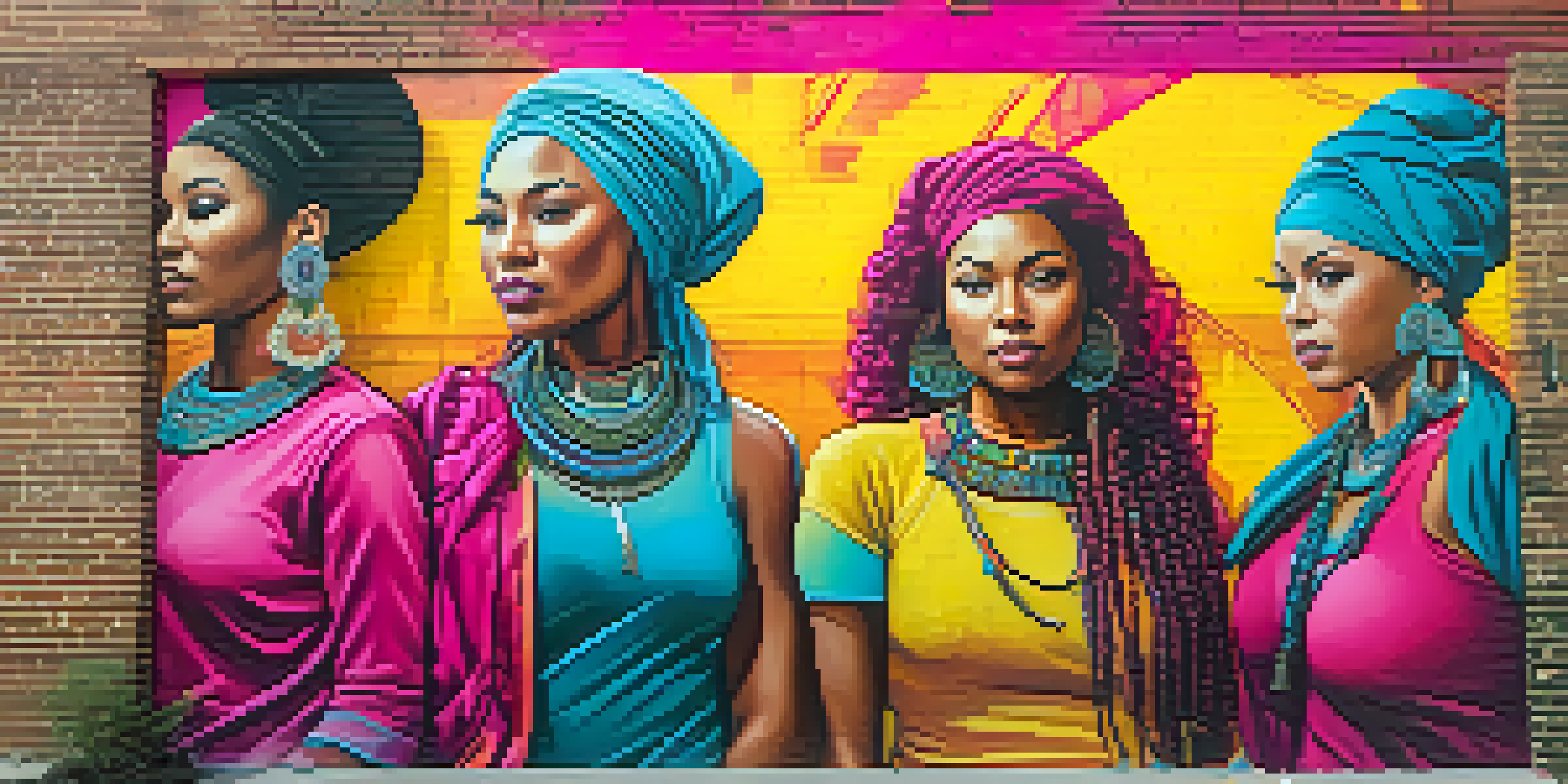Art and Gender in Advertising: A Critical Perspective

Understanding the Role of Art in Advertising
Art has long been a powerful tool in advertising, shaping perceptions and emotions. Through visual storytelling, brands convey messages that resonate with audiences on an emotional level. From iconic logos to captivating imagery, art enhances the overall appeal of products, making them more desirable.
Art is not freedom from discipline, but disciplined freedom.
However, the relationship between art and advertising goes deeper than aesthetics. It reflects cultural values and societal norms, often reinforcing or challenging gender roles. By analyzing these artistic choices, we can gain insights into how advertising influences our understanding of gender in society.
As we delve further, it's essential to recognize that art in advertising is not just about selling products; it's also a medium for social commentary. Artists and brands alike have the potential to spark conversations about gender equality and representation, making their work impactful beyond commercial purposes.
Historical Context: Gender Representation in Ads
Historically, advertisements have depicted gender in ways that mirror societal expectations. Women were often shown in domestic roles or as objects of desire, while men were portrayed as strong and assertive. This binary representation not only shaped individual identities but also reinforced harmful stereotypes, limiting the narratives available to both genders.

As we look back at vintage ads, it becomes clear that these portrayals were not coincidental; they were intentional choices made by advertisers to appeal to their target audiences. Over time, these depictions evolved, reflecting changes in societal attitudes towards gender. However, the remnants of these stereotypes persist, influencing contemporary advertising strategies.
Art Shapes Gender Perceptions
Art in advertising not only enhances product appeal but also reflects and challenges societal norms surrounding gender.
Understanding this historical context is crucial for recognizing how far we've come and how much further we need to go. By examining past representations, we can identify patterns that continue to influence current advertising practices and push for more inclusive and accurate portrayals.
Contemporary Issues in Gender Representation
In today's world, the conversation around gender representation in advertising is more relevant than ever. Brands are increasingly being called out for their portrayals of gender, leading to a demand for authenticity and diversity. Consumers are now more aware of the impact of advertising on societal norms, pushing companies to reconsider their strategies.
Advertising is only evil when it advertises evil things.
However, this shift towards inclusivity is not without its challenges. While some brands have made strides in representing gender more equitably, others continue to rely on outdated stereotypes. This inconsistency can confuse consumers and lead to skepticism about a brand's true commitment to gender equality.
Moreover, the rise of social media has amplified these discussions, allowing consumers to voice their opinions and hold brands accountable. This dynamic environment calls for advertisers to be more thoughtful and intentional in their artistic choices, ensuring that gender representation aligns with contemporary values.
The Impact of Intersectionality on Advertising
Intersectionality is a concept that recognizes how various social identities, such as race, gender, and class, intersect to create unique experiences of oppression or privilege. In advertising, acknowledging intersectionality is crucial for creating authentic representations that resonate with diverse audiences. A one-size-fits-all approach can alienate potential customers and perpetuate stereotypes.
For example, a campaign that celebrates femininity but fails to consider race may overlook the experiences of women of color. By incorporating intersectional perspectives, advertisers can create more nuanced narratives that reflect the complexities of real life. This not only fosters a sense of belonging among consumers but also enhances brand loyalty.
Historical Stereotypes Persist
Past gender representations in advertising continue to influence current strategies, highlighting the need for more inclusive portrayals.
As the demand for intersectional representation grows, brands must prioritize inclusivity in their advertising strategies. This means going beyond surface-level diversity and engaging with the realities of different identities, leading to a richer and more relatable portrayal of gender.
Art as a Tool for Challenging Gender Norms
Art has the power to challenge existing gender norms by presenting alternative narratives. Advertisers can leverage this power to disrupt traditional portrayals and promote progressive representations of gender. By featuring diverse characters and stories, brands can encourage audiences to rethink their perceptions of gender roles.
For instance, campaigns that showcase women in leadership roles or men in caregiving positions can help break down stereotypes and inspire societal change. These artistic choices can spark conversations about gender equality and encourage viewers to reflect on their own beliefs and behaviors.
Moreover, this approach not only benefits society but also enhances brand reputation. Consumers are more likely to support brands that take a stand on social issues, making art a valuable asset in advertising. By using creativity to challenge norms, brands can create a lasting impact beyond the commercial realm.
Case Studies: Successful Gender-Inclusive Campaigns
Examining successful gender-inclusive campaigns provides valuable insights into effective advertising strategies. For example, brands like Dove and Always have garnered attention for their commitment to authentic representation. Dove's 'Real Beauty' campaign challenged conventional beauty standards by featuring women of all shapes, sizes, and ethnicities, resonating with audiences worldwide.
Another notable example is the Always #LikeAGirl campaign, which aimed to redefine the phrase 'like a girl' from an insult to a powerful affirmation. By highlighting the strength and capabilities of young women, this campaign sparked a global conversation about gender empowerment and self-confidence.
Intersectionality Enhances Authenticity
Incorporating intersectional perspectives in advertising allows brands to create nuanced narratives that resonate with diverse audiences.
These case studies illustrate that when brands prioritize inclusivity and authenticity, they can connect with consumers on a deeper level. By learning from these successful examples, other advertisers can harness the power of art to create impactful gender-inclusive campaigns that resonate with diverse audiences.
The Future of Art and Gender in Advertising
Looking ahead, the intersection of art and gender in advertising is likely to continue evolving. As societal norms shift and consumers demand greater authenticity, brands will need to adapt their strategies accordingly. This means embracing diverse narratives and using art as a platform for social change.
Additionally, advances in technology offer exciting opportunities for creative expression in advertising. Virtual reality, augmented reality, and interactive storytelling can engage audiences in new and innovative ways, allowing for more immersive experiences that challenge traditional gender norms.

Ultimately, the future of advertising lies in its ability to reflect the complexities of human experience. By prioritizing inclusivity and authenticity, brands can not only thrive in a competitive market but also contribute to a more equitable society. The potential for art to influence positive change in gender representation is vast, and it's an exciting time to explore these possibilities.